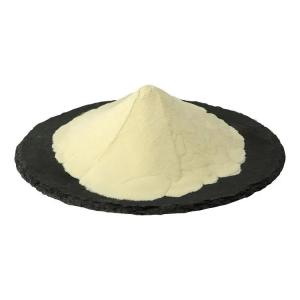News list
News Center
Hot Product
News
Phosphoric acid and sustainable dietary models
Time:2025-10-29
1. Introduction
As sustainability becomes a defining principle of global food systems, every ingredient and additive is being re-evaluated for its environmental and nutritional impact. Phosphoric acid, a common food-grade compound, plays a crucial role in processed food manufacturing. Understanding its place within sustainable dietary models helps link responsible production with mindful consumption, supporting both planetary and human well-being.
2. Functional Role in Modern Food Systems
Phosphoric acid (H₃PO₄) is primarily used in food processing as an acidity regulator, preservative, and flavor enhancer. It ensures product stability, maintains taste profiles, and supports the shelf life of beverages, dairy items, and bakery goods. These functions contribute to food safety and accessibility, allowing for more efficient global food distribution — an essential component of sustainable supply chains.
3. Environmental Responsibility in Production
Sustainable dietary models begin with responsible ingredient production. Manufacturers of phosphoric acid are increasingly adopting eco-efficient processes, such as recovering phosphorus from waste streams and utilizing renewable raw materials. Reducing emissions, optimizing water usage, and managing industrial by-products are key strategies that align phosphoric acid production with environmental stewardship.
4. Phosphoric Acid in the Context of Sustainable Diets
Sustainable diets emphasize nutritional adequacy, minimal environmental impact, and cultural acceptance. While phosphoric acid itself does not provide nutritional value, it supports the availability of safe, affordable foods in regions where preservation and stability are essential. Responsible use of such food additives complements broader dietary goals—ensuring that convenience and sustainability coexist without compromising health awareness or ecological integrity.
5. Innovation and Circular Economy Integration
Innovation in food chemistry and process engineering is shaping the next generation of sustainable food systems. In the case of phosphoric acid, circular economy models promote phosphorus recovery from agricultural runoff, animal waste, and food residues. These closed-loop systems not only reduce resource depletion but also reinforce sustainable phosphorus management, a critical factor in long-term food security.
6. Future Perspectives
The future of sustainable dietary models lies in collaboration among food scientists, policymakers, and consumers. By aligning ingredient technology—like phosphoric acid—with sustainable production practices, the food industry can continue to meet global demands responsibly. Transparent labeling, research-driven formulation, and consumer education will remain essential to achieving both nutritional balance and environmental resilience.
7. Conclusion
Phosphoric acid represents more than a functional additive; it reflects the broader challenge of harmonizing technology with sustainability. Within sustainable dietary models, its responsible use supports efficient production, food accessibility, and environmental responsibility. By integrating scientific innovation with ethical food practices, phosphoric acid can continue to serve as part of a balanced approach to building a sustainable and resilient global food system.
As sustainability becomes a defining principle of global food systems, every ingredient and additive is being re-evaluated for its environmental and nutritional impact. Phosphoric acid, a common food-grade compound, plays a crucial role in processed food manufacturing. Understanding its place within sustainable dietary models helps link responsible production with mindful consumption, supporting both planetary and human well-being.
2. Functional Role in Modern Food Systems
Phosphoric acid (H₃PO₄) is primarily used in food processing as an acidity regulator, preservative, and flavor enhancer. It ensures product stability, maintains taste profiles, and supports the shelf life of beverages, dairy items, and bakery goods. These functions contribute to food safety and accessibility, allowing for more efficient global food distribution — an essential component of sustainable supply chains.
3. Environmental Responsibility in Production
Sustainable dietary models begin with responsible ingredient production. Manufacturers of phosphoric acid are increasingly adopting eco-efficient processes, such as recovering phosphorus from waste streams and utilizing renewable raw materials. Reducing emissions, optimizing water usage, and managing industrial by-products are key strategies that align phosphoric acid production with environmental stewardship.
4. Phosphoric Acid in the Context of Sustainable Diets
Sustainable diets emphasize nutritional adequacy, minimal environmental impact, and cultural acceptance. While phosphoric acid itself does not provide nutritional value, it supports the availability of safe, affordable foods in regions where preservation and stability are essential. Responsible use of such food additives complements broader dietary goals—ensuring that convenience and sustainability coexist without compromising health awareness or ecological integrity.
5. Innovation and Circular Economy Integration
Innovation in food chemistry and process engineering is shaping the next generation of sustainable food systems. In the case of phosphoric acid, circular economy models promote phosphorus recovery from agricultural runoff, animal waste, and food residues. These closed-loop systems not only reduce resource depletion but also reinforce sustainable phosphorus management, a critical factor in long-term food security.
6. Future Perspectives
The future of sustainable dietary models lies in collaboration among food scientists, policymakers, and consumers. By aligning ingredient technology—like phosphoric acid—with sustainable production practices, the food industry can continue to meet global demands responsibly. Transparent labeling, research-driven formulation, and consumer education will remain essential to achieving both nutritional balance and environmental resilience.
7. Conclusion
Phosphoric acid represents more than a functional additive; it reflects the broader challenge of harmonizing technology with sustainability. Within sustainable dietary models, its responsible use supports efficient production, food accessibility, and environmental responsibility. By integrating scientific innovation with ethical food practices, phosphoric acid can continue to serve as part of a balanced approach to building a sustainable and resilient global food system.
Previous:Balanced nutrition narratives about phosphoric acid
Next:None


 CN
CN





